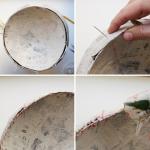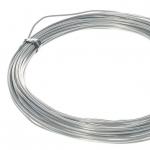The weight of foundation blocks plays an important role in construction. It is used to determine how many elements are needed to make the foundation and whether the foundation can withstand the load placed on it. This is also the main parameter that is taken into account when choosing special equipment for transporting and installing FBS.
General characteristics
FBS are solid foundation blocks that are used when installing foundation walls. They are presented in the form of parallelepipeds poured from concrete, inner part which has no voids. At the ends of each product there are grooves for connecting building elements to each other. The mounting loops are on the top surface.
They are made from heavy expanded clay or dense silicate concrete grades. They have standard sizes and weight according to GOST.
In the markings of these building elements, dimensions are rounded to the nearest decimeter.
- 100 – length of the slab, equal to 100 cm;
- 4 – product width is 40 cm;
- 3 – height of the building element, respectively 30 cm.
- L – the product is made of lightweight concrete.
The abbreviation denotes not only the dimensions, but also the type of mixture from which the blocks are made: “T” - from heavy concrete, “P” - from expanded clay, “S” - from silicate mortar.
Watch the video to see how the block is poured into a special mold.
Depending on the brand of FBS, the weight of the product changes, which can be seen in Table 1.
 Table 1. Block brands
Table 1. Block brands Plate brand, presence of reinforcement (to increase load-bearing capacity building material), as well as the grade of concrete used for the manufacture of FBS, are selected at the stage design work, depending on the load acting on the base under the base of the foundation.
How many products are needed for the construction of a foundation or walls is calculated depending on the load-bearing properties of the FBS and their geometric shape.
Why do you need to know the weight of the slabs?
 The disadvantage of blocks is that their installation process is quite complicated
The disadvantage of blocks is that their installation process is quite complicated
FBS is used for installing the foundation and erecting walls. Their main advantage is that construction site these designs come to finished form, so there is no need to waste time on concrete achieving the required strength. This speeds up the work significantly.
In the manufacture of these building elements, they use special technologies: drying or steaming of products in a factory, this provides the blocks with a standard degree of hardness, frost resistance and compressive strength. To protect the slabs from the aggressive action of atmospheric and groundwater, they are covered with a bitumen-based waterproofing layer.
The weight of the slabs depends on the size of the products and the brand of concrete that was used in their manufacture, plus the amount of reinforcement. It affects the quality and strength of the base. You can find out by using the assortment.
Having determined how much the blocks weigh, builders can calculate how much equipment is needed for their delivery and installation, as well as calculate the load that the FBS foundation can withstand.
Of course, it is advisable to entrust the calculation of the foundation to professionals, but you can also use an online calculator for these purposes. To independently calculate the number of foundation blocks, you need to divide the volume of the foundation by the volume of one block. After this, select the dimensions of the FBS, which, when summed up, are equal to the size of the foundation.
The brand of mortar from which the slab is made, as well as the presence of voids in it, reduces permissible loads to this block. If all calculations are made correctly, then as a result of construction work the owners will receive a stable and durable foundation.
The dimensions of the slab and the grade of concrete also affect the mass of the block. Having found out how much the product weighs (by weighing this building element), you can calculate its density and compare it with the declared density of the plant. This way you can protect yourself from counterfeiting.
It is preferable to buy certified products from well-known brands that have proven themselves in the construction market. If there is no quality certificate for a building material, it is better to refuse it, because it is not known what technical characteristics he has.
When choosing a material for building a house, you should focus not only on cost, but also on the characteristics that determine its quality: weight, density, frost resistance and water absorption.
The weight of any material, including the weight of a foam block 600x300x200, depends on the fillers. Concrete blocks there are various types and have their own characteristics.
The most popular foam block
Concrete blocks are a wide variety of building materials, having different shapes, sizes and fillers:
- Heavy concrete. It is used in fairly large areas for the construction of foundations and plinths. It is characterized by high strength, withstanding enormous loads;
- Reinforced concrete. The structure has built-in steel rods that provide resistance to compression and expansion under the influence of temperature changes;
- Light wall concrete: expanded clay concrete, slag concrete, cellular concrete. Designed for the construction of walls or their insulation, depending on the size of the material fraction.
Foam block is the most popular form of using foam concrete, which in turn belongs to a number of lightweight wall cellular concretes using non-autoclave production technology. Manufacturing involves mixing ordinary cement mortar, sand and water with the addition of a foaming agent.
The principle of composition is bubbles in the cement paste that are independent from each other.
The material is relevant in the field of construction, and although the weight of a 600x300x200 foam block is greater than that of a brick, its density is much higher, thereby requiring less cement mortar to seal joints. It rightfully ranks among the leading building materials of the 21st century. By thermal insulation properties significantly ahead of brick, concrete, expanded clay, etc.
The advantages of foam blocks are invaluable. They are practically eternal and ageless, and have the strength characteristics of stone.
In addition, during the operational period they do not emit harmful substances, and a significantly reduced mass compared to the usual heavy concrete allows you to save on foundations.
Standard size
Project requirements in construction work Everyone has their own, so the sizes of foam concrete vary. At the first stage, it is necessary to make an approximate calculation of the required quantity, during which not only external walls, but also partitions.
During the calculation process, it is also important to calculate the possible loads; this will help to select the material of the required density and strength. Taking into account all the data, the optimal parameters are selected, ranging from the size of an ordinary brick to a large slab.

One of the main parameters is the thickness of the product, which is responsible for the ability of the constructed wall to withstand maximum loads and its thermal insulation properties.
The classic sizes were once as follows:
- 200 mm long;
- 200 mm in height;
- 400 mm thickness.
However, over time, they have ceased to be popular and such values can be found in the production of slag concrete and expanded clay concrete.
As a rule, the weight of a 600x300x200 foam block with these parameters will be 30% less than conventional expanded clay concrete. For partitions, a thickness of 100 mm is used.
The standard size is determined by the specifics of shaping the product in production. The technology is cutting and casting. Regardless of the method, the projection of the mold box reaches a height of 60 cm, and after cutting the array, the upper part becomes the side end of the block.
Cutting technology allows you to make any material parameters, but the standard, regulated by GOST, is 600x300x200.
Standard weight
The weight of foam concrete directly depends on its density and size; the larger the dimensions and volume of the porous cells, expressed as a percentage, the greater the weight.
For each type of foam blocks, there are special calculation tables that consistently indicate size, density and weight. The basic values are valid under the condition of a total air humidity of 75%.

For specialists, the parameters of building elements made of lightweight porous concrete speak volumes. Depending on the parameters they are classified into:
- Thermal insulation;
- Thermal insulation and structural;
- Structural.
It should be noted that maintaining exact geometry is impossible, so the weight and dimensions vary among different manufacturers.
Depending on density
Weight of any building material depends on its fillers, which in turn determine the density value. Sand and fly ash play the role of filler. The latter is a finely dispersed element; sand is denser, so its presence in a larger volume determines the overall density of acrete concrete.
Specific gravity is denoted by the Latin letter D followed by a number indicating the number of kilograms of concrete in one cubic meter.

Lightweight qualities are not the main characteristics for which building materials are valued. Its main goal is to provide maximum thermal insulation while maintaining the required strength of the entire erected structure.
The higher the indicator specific gravity, the greater the strength and thermal conductivity. And if the ability not to succumb to destruction is not superfluous, then a high coefficient of thermal conductivity reduces the function of a building material to retain heat. Therefore, when choosing, you need to focus on all indicators and look for a compromise.
Often during construction, foam blocks with a specific gravity of D 600-D 700 are used as a structural and thermal insulating building material.
It is safe to say that density is an important quantitative characteristics lung structures cellular concrete, defining it technical properties, including the weight of the foam block 600x300x200.

Product drawing:
FBS 24-6-6 foundation blocks are made of reinforced concrete and have the shape of a parallelepiped. They are called the full six. Like all reinforced concrete products, foundation blocks are marked with an abbreviation. IN in this case“FBS”, which can be deciphered as “solid foundation blocks”. In their markings they have numbers indicating the sizes of their three dimensions - length, width and height, traditionally in decimeters.
To install these reinforced concrete blocks, special hinges are installed on them, by which they are lifted by working equipment. There are grooves at the ends that are filled cement mortar for the strength of their connection to each other. They must be strong and reliable, since they are designed to withstand the load of the mass of the architectural structure. They must be resistant to temperature changes, frost-resistant, and should not be subject to the destructive effects of moisture from the soil. Like similar ones reinforced concrete parts, they are made from heavy grades of concrete that meet the requirements of strength, water resistance and frost resistance. Additional reliability is provided by the internal frame made of reinforcement.
The production of FBS 24-6-6 blocks must be carried out strictly in accordance with the rules of GOST 13579-78. The use of foundation blocks is a modern stage of urban construction and industrialization in general, since it is prefabricated reinforced concrete structures seem to be the most convenient and practical. This material could radically change the quality of buildings, influenced the speed and cost of building construction, and the ergonomics and practicality of work. construction equipment. Basically, solid foundation blocks are used for laying strip foundations. But in practice, their range of use is much wider - these are the walls of industrial buildings, walls of basements and plinths.
Depending on the region and manufacturer, these blocks may have the following marking options:
FBS 24.6.6t (the letter "t" in this case means that the block is made of heavy concrete)
Any design and construction, including laying foundation blocks, must be carried out strictly in accordance with the required technologies provided for in SNiP. This abbreviation is very familiar to all builders; it stands for “ Building codes and rules." Strict adherence to all prescribed recommendations and instructions is primarily a matter of safety and reliability of the building’s future operation. The slightest inaccuracy or oversight in work can lead to irreparable consequences. What I would like to remind you about working with concrete products such as solid foundation blocks.
The basis of the foundations and the beginning of any work should be the determination of the type of soil and soil from a geological point of view. Check the level and depth of soil freezing in winter period. It is also necessary to determine the depth groundwater and calculate the expected load on the foundation, plus make a margin for safety. Based on these data, a project is being prepared that takes into account all the nuances of the layout of foundation blocks and pillows. It is very important not to make a mistake with the layout of the axes; this will allow you to create the necessary and correct geometric shape building under construction. Foundation pads, by the way, ensure the reliability of the foundation being laid. Also, one of the main stages is properly waterproofing the foundation. Saturated with salts groundwater quite aggressive. The block filler can, of course, be different - from crushed stone to expanded clay, more cheap material It is more economical and even lighter, but it makes the foundation less strong.
You cannot neglect the characteristics of the grade of concrete from which FBS blocks are made; compare them with GOST 13579-78. If the foundation is done incorrectly, sooner or later cracks will appear in the walls, the entire geometry of the room will be disrupted, moisture will begin to seep in and even wind will penetrate. That is, it is the foundation that determines the condition and quality of the entire house as a whole. Practical control over the work of laying the foundation must be the strictest so that the entire construction does not go to demolition in the future. The damage from this can be colossal.
Manufactured in industrial conditions FBS 24-6-6 foundation blocks guarantee the quality of reinforced concrete products. Laying the foundation with blocks is a significant time saver, since the work is done really quickly and is not overly complicated. Such a foundation can be loaded immediately after it is laid - this is also an important plus for builders.
Technologically, it is stipulated that each foundation block is tested in production for strength in accordance with GOST 13579-78. If the foundation is made monolithic and concrete is poured, then construction suffers “downtime”, since such a foundation must be given time to thoroughly harden (sometimes these periods are calculated in weeks), whereas with reinforced concrete blocks construction continues without pause. In addition to solid foundation blocks, there are also hollow foundation blocks and solid foundation blocks with a cutout. Jumpers are placed in these cutouts and communications are laid.
Technologies for the production of building blocks are constantly being improved. As a result, they have new properties that expand the scope of their application and make their use more and more profitable. True, for this it is important to take into account the most different parameters, including the weight of the building block.
Scope of application of blocks
Block structures can be divided into two large groups:
- masonry (or wall);
- foundation.
For construction interior walls the lightest one is often used building block. It is made from foam or aerated concrete, and can also be expanded clay concrete, wood concrete, or porous ceramic.
Massive blocks are indispensable when laying the foundation of a building. Their strength and ability to withstand the heaviest load largely determines the weight of the concrete block, as well as the composition of the material from which it is made.
Innovations introduced into production have made the quality of block foundations no worse than the well-known monolithic ones. But the work moves much faster, installation is simplified, and costs are reduced. In addition, they are suitable for use in various climatic zones and geological conditions.
In addition to foundations, concrete blocks have proven their effectiveness in construction and installation:
- multi-storey buildings;
- non-residential construction projects,
- various fencing,
- various partitions and ceilings.
What are the blocks?
On construction sites 3 types of concrete blocks are actively used:
- hollow;
- solid with cutout;
- solid.
Hollow is the easiest block to build. Its standard weight is 14-17 kg. It is very cost-effective when laying walls. It is no coincidence that this technology is widespread in Europe and the USA. What is attractive is not only the ease of installation, but also the ability to fill the voids of the blocks with heat or sound insulation, as well as their smooth outer surface, thanks to which the walls do not need plaster.
Solid foundation blocks with a cutout weigh 400-600 kg. Inside they have special grooves in which the necessary communications are laid, which reduces the period of connecting the new building to heating and electrical networks, and water supply.
The most reliable and solid ones are solid foundation blocks, completely filled with concrete and reinforcement. Their weight directly depends on the size and can range from 300 kg to 2 tons. Calculating the weight of a concrete block helps to find out exactly what from this range is needed for a particular object.
Sometimes an amateur builder who, for example, decided to build with his own hands country house, does not know how to calculate the weight of a concrete block suitable for construction.
The basic indicators here are the dimensions of the structure and the weight of 1 m3 of concrete block. By multiplying the dimensions of each side, we find out the volume of concrete in the block, and then multiply it by the weight of one cubic meter of concrete.
There is an easier way. You can find out how much a concrete block weighs from the manufacturer or a representative of the selling company, and then decide on the number of blocks of a suitable type needed for construction.




